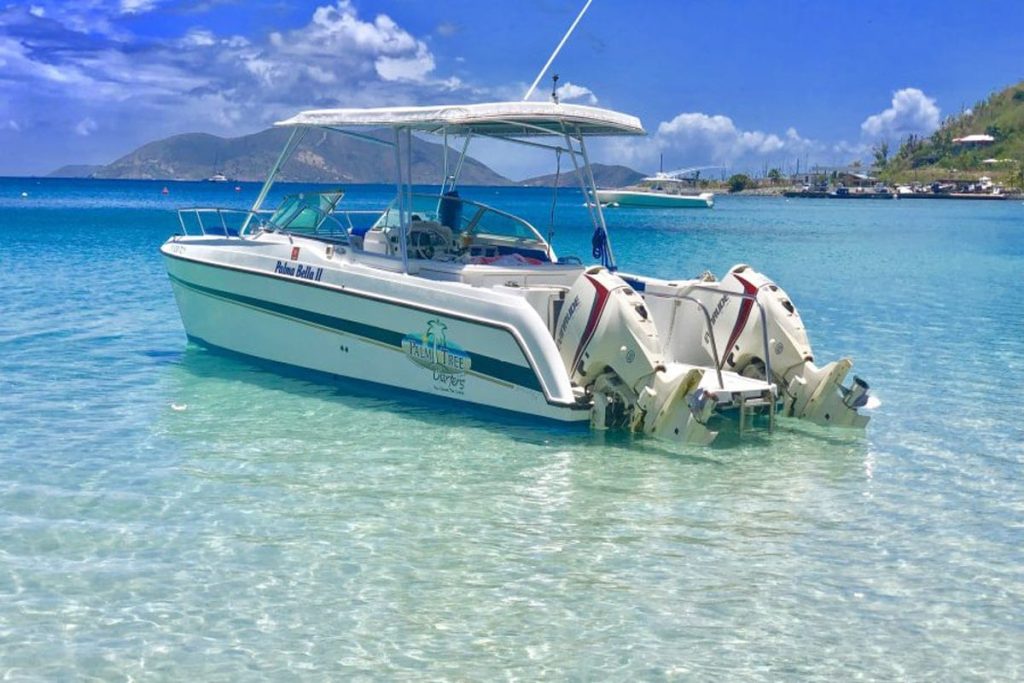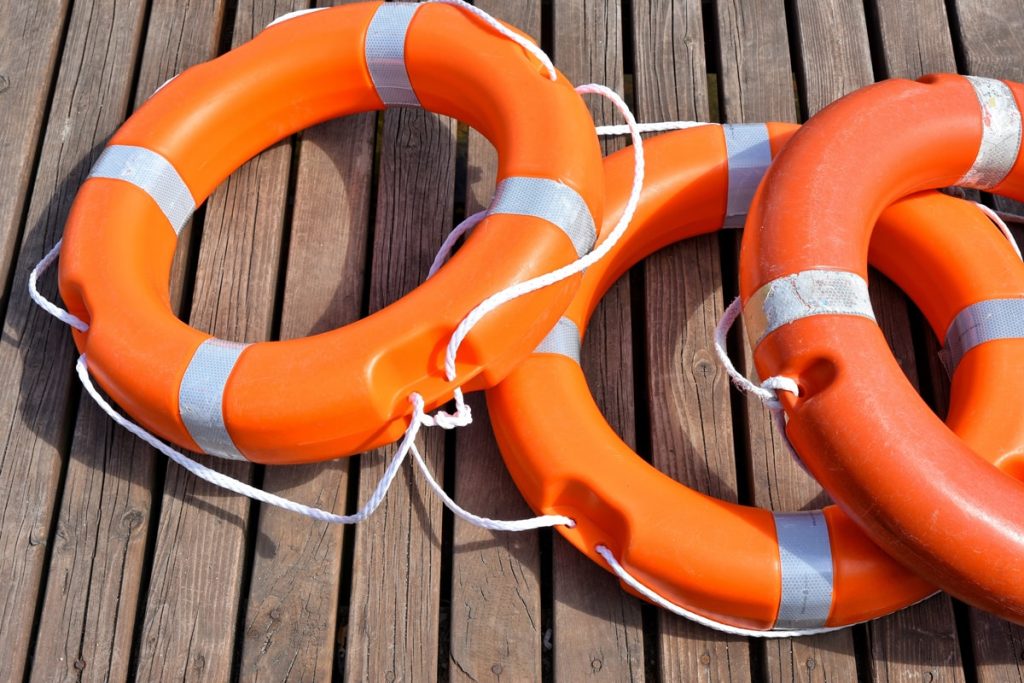Required Boating Safety Equipment
General Commercial
Passenger Application Info
Required Boating Safety Equipment

What do you need to complete your Commercial Vessel License Authorization for Power Boats under 15 meters?
Let’s talk about that for CVLA! Our Safety List may seem daunting, but we are always available to help break it down for you
Paperwork Vessel Items
- CVLA SCV 1 Application ( Provided by CVLA)
- CVLA SCV 2 Application ( Provided by CVLA)
- Stability Letter (This may come from CVLA, or you may already have one that we can approve.)
- Local Virgin Islands Registration (Even if you are US Documented if you spend more than 90 days in a calendar year in the USVI you must have local registration from DPNR.)
- Solas Tables (Can be downloaded from the CVLA link to our Drive given to you)
- Nautical Almanac ( See CVLA for a Link to our Drive)
- Tide Charts ( See CVLA for a Link to this Drive)
- Training Manual ( See CVLA for a Link to this Drive)
- Paper Nautical Charts corrected to 2016 or newer in the area that you conduct charters.
- Ships (Radio) License
- Local VI Registration ( Applied to Port and Starboard Front Sides of Vessel)
- Vessel Name required on Stern. (If you are U.S. Documented, you must also have your hailing port on the Stern).
- Captains Log Book (Electronic is sufficient for this)
- Ships Station License. All vessels require a CURRENT Ships Station License and Call Sign. Please see our link on how to obtain this here.
- CVLA Compliant Decal on Vessel
I will expand on the above on a new information page.
Navigation Safety Items
- Fixed Magnetic Compass Required on all vessels.
- Handheld Magnetic Compass is also required to take bearings over 360 degrees.
- Emergency Lighting (Flashlights)
- VHF Radio. All vessels require a FIXED VHF Radio.
- Emergency 2-way communications. All vessels require a handheld radio in case of abandoning the ship.
- GPS/GNSS Receiver. Vessels in Category 0,1,2 only require an operating GPS.
- Barometer. All vessels in Category 0,1,2,3, and all Category 4 vessels OVER 12 meters require a barometer on board.
In General, Category 2 is compliant for 60 miles from a safe harbor. Category 3 is 20 miles from a safe harbor. Category 4 is 20 miles from a safe harbor in daylight hours and favorable conditions. Category 4 allows you one hour before sunrise and one hour after sunset as long as you have the required lights.
Some Life-Saving Appliances But Not All!
(Please see in and out of water inspection for main listing).
- Smoke Detector Required in Hallways and Galley on an enclosed vessel.
- Thermal Protective Aids (Space Blankets) x 3
- Adult Life Jackets. 1 per Adult listed in the documentation required. Type 1 USCG approved if the USA flagged.
- SOLAS if SOLAS country flagged.
- Each must have the vessel name written on it. Each must have reflective tape affixed.
- Each must have a whistle on a string attached. Each must have a light attached to the upper side, working and in date.
- Category 4 vessels are not required to have lights.
- Childs Life Jackets. One is required for each child on board, with a minimum of 2 onboard required. Type 1 USCG Coast Guard Approved if USA Flagged.
- SOLAS if SOLAS Country flagged.
- Each must have the vessel name written upon it. Each must have reflective tape affixed. Each must have a whistle on a string attached.
- Each must have a light attached and in date.
- Medical Chests: An excellent first aid kit for vessels intended use is required. There must be no expired items in it. include Tourniquet and packing gauze.
- Each crew member requires a safety harness.
- Buoyant Apparatus. Type 4 Float Capacity. Category 3 and 4 vessels require enough floatation capacity for EVERY person onboard. Floatation capacity can be a combination of:
- In date, Life raft capacity if you carry one on board.
- Tender capacity (must have a capacity plate on tender) only if always onboard or towed.
- The rest of the capacity in Type 4 floats to cover all persons.
Life Buoys
- Two horseshoe or circular life buoy required. One must be orange for international travel.
- Each must have the vessel’s name written upon it and reflective tape affixed to it.
- One must-have an 18 meter/60′ buoyant line attached.
- The other life buoy must have an automatic float light.
- Vessels in Category 4 do not require a floating light.
Visual Distress Signals & Flares on Vessel
- Red Handheld: Category 0,1,2,3, requires a total of 6 in date. Category 4 requires two in date.
- Smoke Signal Flares (Often Orange). All vessels require two in date.
- Parachute Flares.
- Category 0 requires 12 in date.
- Category 1 requires a total of 6 in date.
- Category 2 and 3 require 4 in date.
- Category 4 does not require any.
Fire Fighting Equipment on Vessel
- All vessels shall have two fire buckets clearly labeled FIRE. Each to have a lanyard attached to the handle.
- Any enclosed Engine Room must have either a fixed fire extinguishing system in date OR provision through a boundary layer (fire port) to allow a portable fire extinguisher to discharge.
- The First extinguisher is to have a minimum rate of 13A/113B or similar, in date and tagged.
- Fire Extinguisher for accommodation spaces. One hand or power operated fire pump OR 1 X 13A/113B and 1 x 5A/34B extinguisher at each exit to accommodation spaces with a minimum of 2 onboard.
- All vessels fitted with a galley require a fire blanket mounted near the stove.
Vessel Signage
- Emergency Exits. Emergency exits need labeling either EMERGENCY EXIT or a green running man. ( CVLA Can provide)
- Propane Action Card. Only required on Vessels that have propane. Display the Emergency Action Card near the propane appliance. The Emergency Action Card can be downloaded from the CVLA drive link given to you.
- Placards MARPOL. A Waste placard to be affixed where it is best seen.
- A Pollution Placard is required to be affixed where it is best seen.
- Emergency Fuel Shut off is clearly labeled and visible or marked to be visible without moving or opening anything.
- Water Weathertight Conditions. “DO NOT OPEN AT SEA” is required on all required doors and hatches according to your SCV2 Document.
Emergency Fuel Shut Off
- All vessels will have a means of shutting off the fuel supply to machinery in the case of a fire.
- An Emergency Fuel Shut off valve is to be outside the engine room.
- The valve shall be mounted as close to the fuel tank as practical.
- An outboard fuel tank disconnect will not pass as a valve.
Alarms
Propane Detector. Only vessels with propane require a gas detector. The gas detector must be able to be tested.
Scuppers Inlets and Discharges
Bungs/ Wooden Plus. An efficient means of closing the through-hulls above the waterline.
Signal Lamps
- All vessels require a means of Morse Code.
- Boats in Category 0,1,2,3, require a searchlight or spotlight for Man Overboard situations.
Radar Reflector
Radar Reflectors are required on all boats.
Navigation Lights, Shapes, Sounds for Vessels
- All Vessels OVER 12 METERS shall have a sound signal. ( Electronic Horn, Canned Air Horn, Conch Shell)
- Running Lights. All Vessels require working approved running lights except for Category 4
- Anchor Lights. All Vessels require working approved anchor lights except for Category 4
- Day Shapes. All vessels are required to have a day shape.
Propulsion Main Engine
Emergency Starting. All vessels require two means of starting the main engines. These can be Battery Change over Switches, pull start, or jumper cables.
Bilge Pumping Arrangements
- Electric or engine powered bilge pumps. 2 required, 1 of which “MAY” be power drive and one must be hand-operated. IF under 12m, the hand pump can be portable.
- Manual Bilge Pump. All vessels require a manual bilge pump. Boats larger than 12 meters or Category 0 or 1 must-have fixed hand pumping capabilities to all compartments. Strum boxes fitted where necessary.
- Vessels less than 12 m in Category 2,3, 4 as above may have a handheld pump.
Water Level Indicators
High-water alarm. All vessels shall have a high-water alarm fitted to all non-self-draining ENCLOSED machinery spaces. Alarms shall be audible at the steering position.
Ballast Fuel and Other Tanks
Propane Storage and Drainage. Propane tanks shall be secured and in an area where there is sufficient natural drainage to remove gas vapors.
Fire Dampers
Engine Space Vents. An efficient means of closing engine space vents to contain the fire extinguishing medium.
The Functionality of Safety Systems
Emergency Steering. All vessels must have an effective means of steering in case of remote mechanism failure. Emergency Tiller, Twin Screw, Outboard Motor, AutoPilot direct to rudder quadrant are all viable.
Anchoring Devices
- The main Anchor must meet size requirements for weight, chain, and rope size as determined by CVLA.
- Kedge Anchor must meet size requirements for weight, chain, and rope size as determined by CVLA.

